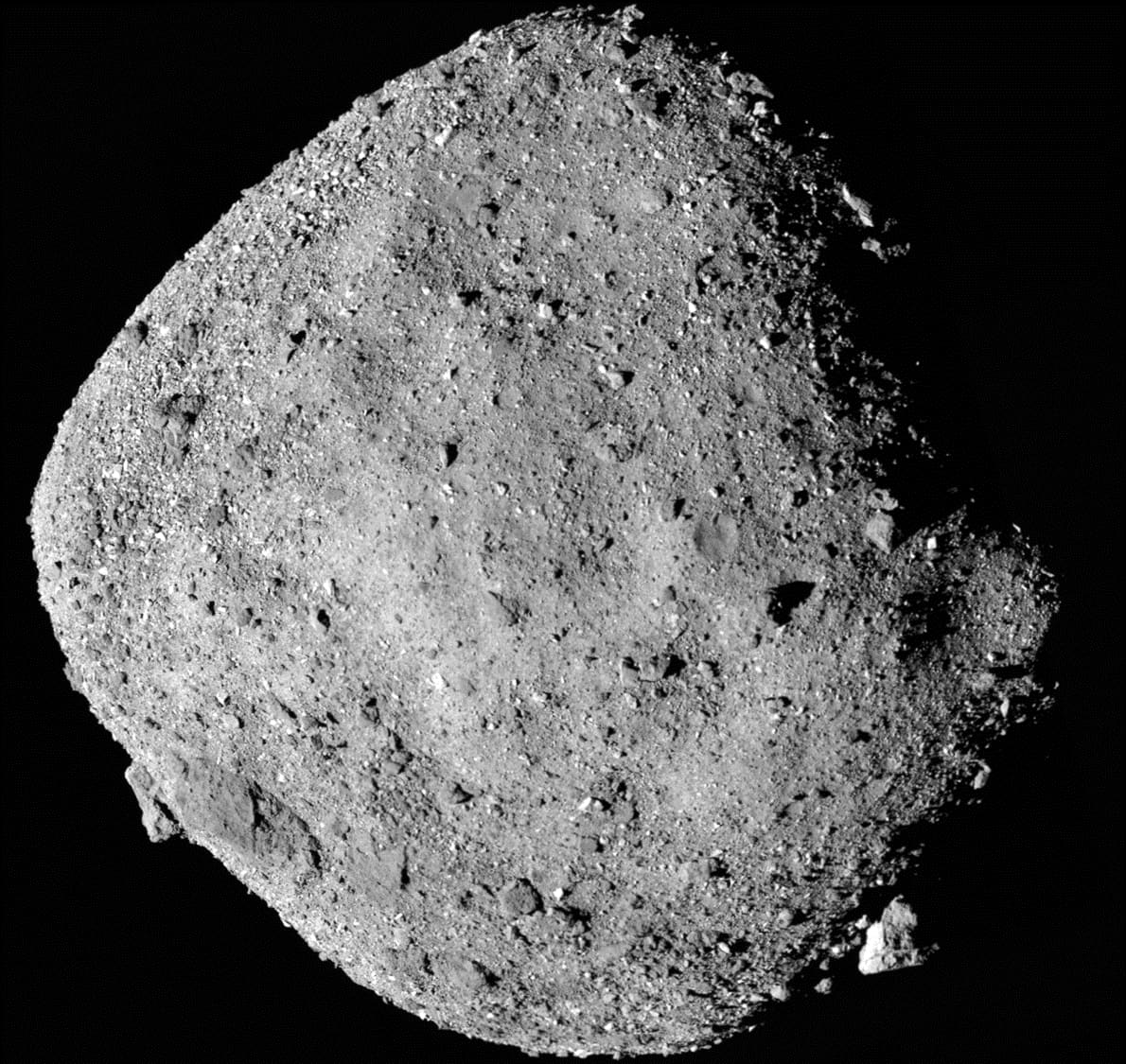NASA spacecraft OSIRIS-REx touches the asteroid Bennu in historic attempt to return samples

A rendering of the OSIRIS-REx spacecraft.
NASA
A NASA spacecraft on Tuesday touched the surface of the asteroid Bennu, in a mission that aims to return rocky pieces for examination on Earth in 2023.
The mission marks the first time NASA has attempted to return materials from an asteroid, a feat that only Japan has pulled off before but in smaller quantities. While NASA confirmed that the spacecraft touched the asteroid, the space agency will not know for several more hours if it collected materials successfully.
Called OSIRIS-REx – an acronym that stands for Origins, Spectral Interpretation, Resource Identification, Security, Regolith Explorer – the NASA spacecraft represents the culmination of years of work. The mission launched in Sept. 2016, with a total cost of about $1 billion.
“Everything I’ve worked on has been focused on this day, getting the spacecraft down to contact the asteroid and collect the sample,” Dr. Dante Lauretta, a professor of Planetary Science and Cosmochemistry at the University of Arizona and the leader of the mission, told CNBC.
The OSIRIS-REx spacecraft itself is about the size of a large van: 20 feet long, 9 feet wide, 10 feet tall, with an 11 foot arm that will reach down to grab material in a maneuver NASA calls “tagging” the asteroid. The spacecraft was built by Lockheed Martin’s space division.
“What deep space missions are able to discover is directly applicable to [NASA’s other efforts, such as] lunar exploration,” Lockheed Martin director of deep space exploration Ari Vogel told CNBC.
Tagging the asteroid
An image of the asteroid Bennu taken by NASA’s OSIRIS-REx spacecraft.
NASA
OSIRIS-REx is more than 200 million miles from Earth, having arrived at Bennu in Dec 2018 after two years of travel. NASA spent most of 2019 surveying Bennu with the instruments on board the spacecraft, to further inform its tag attempt. NASA announced in Dec. 2019 that OSIRIS-REx would target a location named Nightingale, which is where Tuesday’s material collection occurred.
Bennu is “the best characterized asteroid astronomically in history,” Lauretta said. Like the Earth, the asteroid is in orbit around the Sun. At the time of the attempt, Bennu was on the opposite side of the Sun, meaning there is a communications time delay of about 19 minutes between Lockheed Martin’s mission control in Colorado and the spacecraft at the asteroid.
The OSIRIS-REx spacecraft undergoes testing before launching in 2016.
NASA
“When we’re talking to the spacecraft, we have these giant antennas that are all over the world that send a signal that goes past the sun, and then another distance across the solar system, and then it reaches the spacecraft,” Lauretta said.
Lauretta is in charge of the scientific goals of the mission, primarily selecting the site to collect the materials.
“Once I made that selection, I handed it over to the engineering team and spacecraft team, which Lockheed Martin is responsible for,” Lauretta said.
The sample collection is a 4 and a half hour event, with the spacecraft performing multiple maneuvers to slowly approach the asteroid’s surface.
OSIRIS-REx is aiming to collect at least two ounces of Bennu’s material to deliver back to earth, the largest such sample return from space since the Apollo moon missions.
The asteroid Bennu
NASA
Subscribe to CNBC PRO for exclusive insights and analysis, and live business day programming from around the world.




